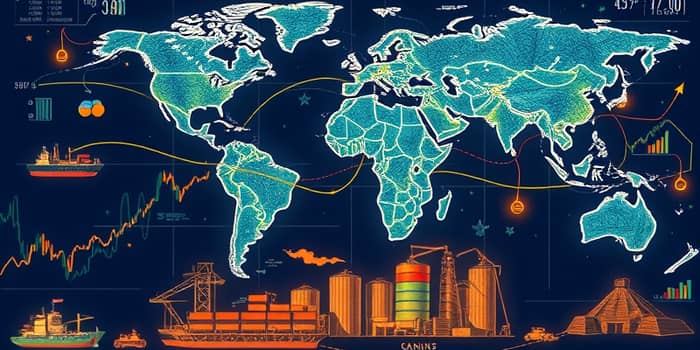
The global marketplace is witnessing a significant recalibration in commodity prices as persistent supply chain challenges reshape demand dynamics. Projections from major institutions indicate a broad-based decline, touching energy, metals, and agricultural sectors alike. In this article, we explore the trends, drivers, and solutions, aiming to equip readers with insights to navigate an era of price volatility and logistical complexity.
According to the World Bank, the overall commodity price index is set to fall by 12% in 2025 and a further 5% in 2026, reaching its lowest real level since 2020 when adjusted for inflation. While nominal prices remain above pre-pandemic highs, the real terms adjustment signals a return below the 2015–2019 average for the first time in nearly a decade.
Breaking down the forecast:
Multiple factors converge to push commodity prices downward. Slower global GDP growth, fueled by fiscal tightening and uneven recovery across regions, has dampened demand. Meanwhile, an oversupply of oil—amplified by renewed production from non-OPEC sources—keeps downward pressure on benchmarks.
Another pivotal element is the rapid electric vehicle adoption, especially in key markets like China, where EV and hybrid models now account for over 40% of new car sales. This shift reduces long-term crude demand forecasts and encourages producers to recalibrate output targets.
Beyond classic supply-and-demand forces, ongoing disruptions in global supply chains intensify price adjustments. These challenges stem from a complex web of geopolitical, regulatory, and logistical hurdles.
Supply chain disruptions have a direct impact on headline and core inflation in open economies. According to the Federal Reserve Bank of New York’s Global Supply Chain Pressure Index (GSCPI), periods of high supply chain stress correlate strongly with spikes in goods inflation.
Policymakers now monitor these dynamics closely. In economies where food and tradable goods represent a large share of consumer spending, central banks may adjust monetary policy to offset second-round effects, preventing persistent inflation even as commodity prices recede.
Companies and governments are adopting a range of measures to mitigate future shocks and stabilize price movements:
The downward trajectory of commodity prices offers both challenges and opportunities. Lower input costs can relieve some inflationary pressures, but ongoing fragmentation in supply chains demands proactive strategies. By embracing digital transformation and fostering diversified sourcing, stakeholders can build the resilience necessary to weather future shocks.
Ultimately, those who adapt to the dual forces of shifting commodity markets and complex logistics will emerge stronger, more agile, and better positioned for sustainable growth in the years ahead.
References













